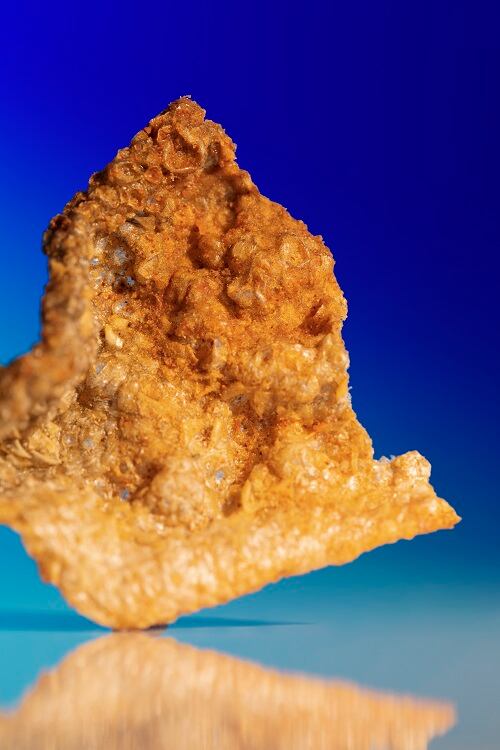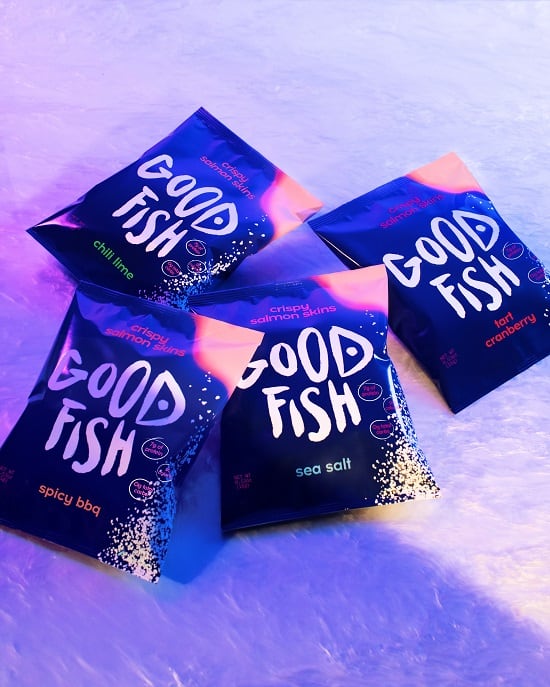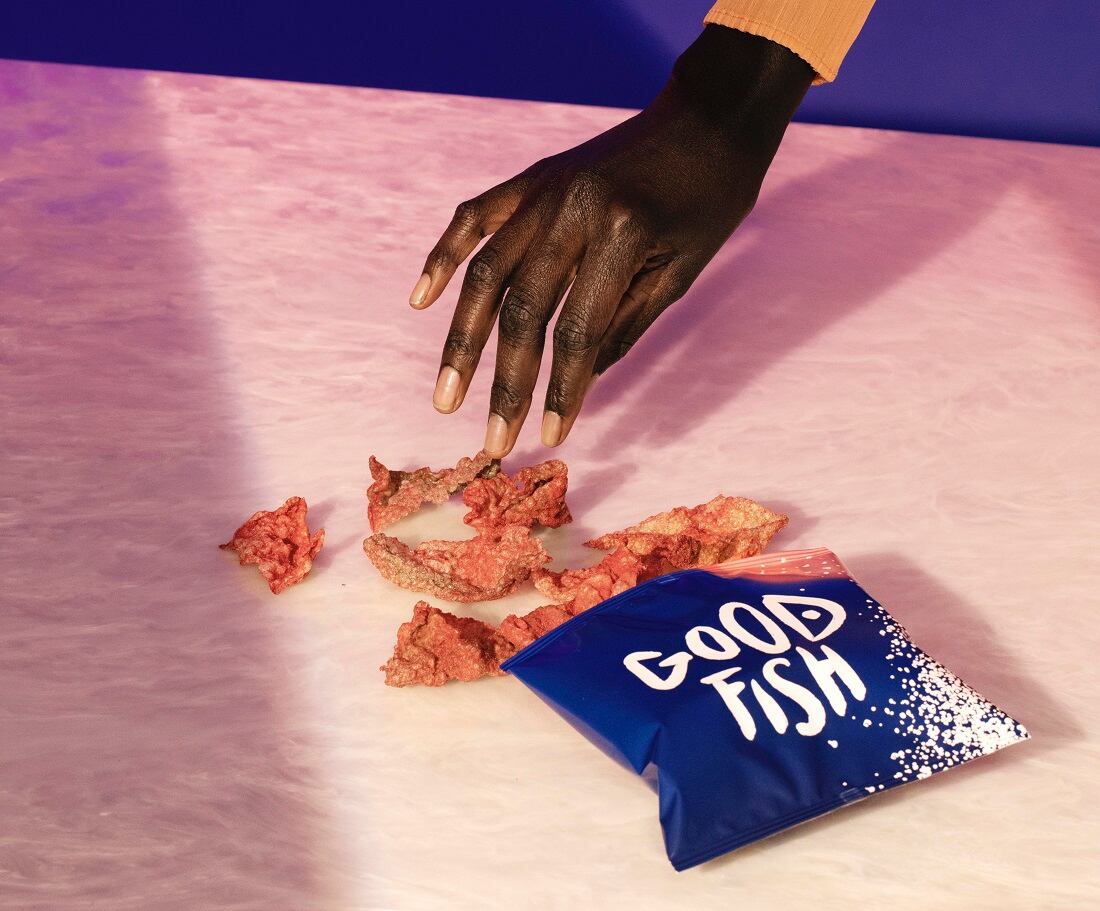Guilbert and Riboud always had the ambition of creating a consumable product using a sustainable seafood source but had Harmless Harvest – a brand of coconut water which to this day is growing at double digits in a category that has slowed down, said Guilbert – to keep them busy for the past decade.
"We actually came up with the name Goodfish at the same time as we did the name Harmless Harvest (in 2009). The idea behind it was exactly the same, just different ecosystems," Guilbert told FoodNavigator-USA.
Guilbert and Riboud knew they wanted their next sustainable brand venture to be in seafood, but weren't sure where to start.
"We wanted to make sustainable seafood something that’s fashionable, attractive, and exciting, but we have to do it in a way that’s going to be novel so people are willing to give us the time of day and we’ve got to steal market share from the largest players in the world," said Guilbert.
The two took a trip to Japan where they immersed themselves in the culinary culture of the island nation, which revolves around seafood.
"There was an incredible culinary understanding and creativity for seafood there, and we spent months trying everything to get some ideas of how seafood is meshed into the culture," he said.
It wasn't long before they discovered the prevalence and cultural love for dried fish skins (called Shiojake or Shiozake), which are typically served as a topping to many Japanese meals or as a savory snack.

Guilbert remembered thinking at the time, "Why on earth are we not using the skins [in the US] and throwing them out? It’s got all the nutrition, fat, and flavor."
Shortly after their culinary discovery, the founders connected and began working with a sustainable, well-regulated fishery in Bristol Bay, Alaska, and started using leftover salmon skins from Wild Alaska Sockeye to create Goodfish products.
Creating a brand around salmon skins
Not oblivious to the fact that crispy salmon skins would be an entirely foreign (and sometimes off-putting) concept to many American consumers, Guilbert and Riboud spent months creating a brand that would be appealing to a US audience where potato chips are the norm.
"We knew it was going to be a polarizing story. First of all, you’re selling fish skins, so that in and of itself is pretty challenging," said Guilbert. "But we knew it had cultural relevance, we just had to educate the consumer."
Part of the brand's success had to revolve around creating a constant consumer feedback loop, said Guilbert, and shed the tempting mindset of chasing hundreds of thousands of 5-star reviews.
"We decided to look at our community of purchasers as an organic panel of feedback; something that would’ve cost millions of dollars to do as a corporation. And instead of looking at the criticism as a danger or a threat to our success, we look at it as an opportunity to keep on improving," he said.
Guilbert noted that the products were about "70% to 80% there" when the brand first launched direct-to-consumer at the height of the pandemic in March 2020. But through direct consumer feedback and 100% ownership of its supply chain, the brand was able to quickly tweak things such as salt and seasonings levels, and figure out how to bring down the fishy flavor of its products.

"We had a crazy opportunity which was amplified by the pandemic because of the shift towards e-commerce that drove a lot of dollars and eyeballs and time onto DTC. The whole concept, aesthetic, and creative approach of what we were trying to express was geared towards direct to consumer and not for shelf," he said.
According to Guilbert, the consumer traction quickly followed.
"We hit a $1m run rate within the first 90 days, and we hit $2m run rate in 6 months. We immediately raised another round in December (led by Siddhi Capital) because the traction has been so phenomenal," he said.
'You've got to reach a tipping where critical mass is required'
While the founding principle to the Goodfish brand story is to upcycle salmon skins (the company has upcycled approximately 206,000 salmon skins to date), Goodfish is taking a different route to getting consumers and the world to actually care about sustainability, a concept it calls "constructive capitalism" in which the company leverages the consumer culture already in place to enact massive consumer adoption for sustainable products, explained Guilbert.
"We’re actually creating a case for positive consumerism that doesn’t need to sit on a soapbox of environmental or social consciousness, but based on purely love and adoption [of the product]," he said.
"You’ve got to reach that tipping point where critical mass is required. And there's only one way out, and that's to embrace the culture and the system we have in place, which is consumerism and capitalism," he said.
"Eventually every single food and beverage is going to be organic, sourced sustainably, compostable packaging, you name it, because there won’t be another option.
"And the only way to create a narrative for it is to show threat. You have to show a threat to legacy. It’s not about greenwashing, it’s not about creating some performative sustainability story, it’s about having a product that is sustainable."
Asked about the brand's ambitions as it continues to scale, Guilbert said the goal is to have "every single salmon skin that comes out of the Alaska seafood industry will be upcycled into a human consumption in some way, shape, or form."
"I don’t see anybody challenging our growth, I only see people joining our growth," he added.

